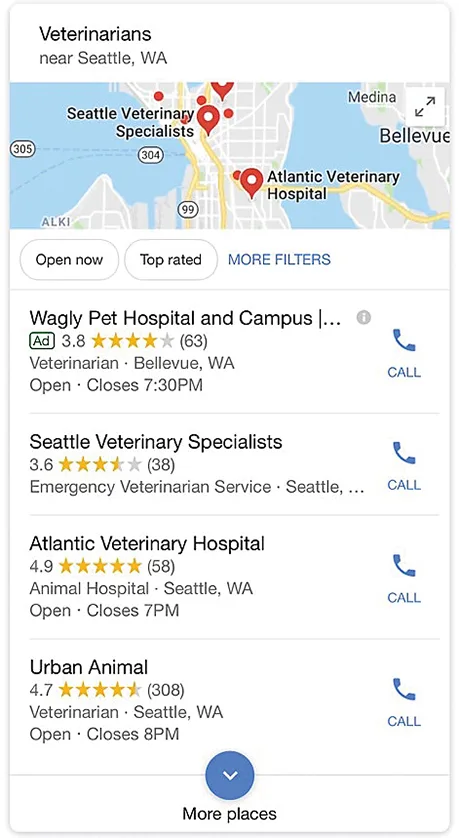Top 5 Ways to Improve the Practice’s Online Reputation
Eric Garcia, Simply Done Tech Solutions, Lutz, Florida

A great reputation can take years to build but only moments to ruin. A veterinary practice can work tirelessly for a decade or more to deliver outstanding care and service to clients and their pets, yet one upset client spreading his or her negative impression can cause countless people to think badly about the practice.
The good news is that by understanding how online reputation management works and how to approach clients for feedback, a practice can not only secure an excellent reputation but also buffer the reputation against negative client reviews. Practices also can learn how to engage with clients to ensure positive reviews and how to satisfy pet owners who may have had previous bad experiences and may even have lodged a complaint.
First, remember that the practice’s name is tied to its online reputation. When prospective clients conduct a simple online search for a local veterinarian, the search will showcase top results along with the practice address, hours of operation, and phone number. (See Figure 1.) When a practice’s reviews are bolstered, so is a potential client’s first impression. First impressions are so important—because there is only one.
Here are the author’s top 5 ways to improve a veterinary practice’s online reputation.
1. Search for the Practice Online
Never be scared of what might be found—just dive in. When a Google search identifies the practice, look for “Claim Your Listing,” and follow the onscreen prompts to verify you own the business so you will be allowed to respond to reviews.
Follow up with searches on Yelp, as well. Yelp is another common review site where pet owners are likely to leave reviews about the practice.
To claim your listing on Google, visit www.google.com/business
To claim your listing on Yelp, visit biz.yelp.com/support/claiming (see Resources)


The different views seen on desktop (left) and mobile device screens when using Google to search for a veterinary practice. Photos courtesy of Eric D. Garcia
2. Set Up Online Alerts
Use free online tools (eg, Perch) to allow for automatic notifications whenever a new online review is found.
3. Engage with Positive Reviewers
Simply respond to the client on the review site and show your appreciation publicly, call the client, or send a handwritten note saying thank you for the online review. These clients are the practice’s brand advocates and showing appreciation for their support of the practice and its growth is important.
For example, respond with, Thank you so much for your kind review. We sincerely appreciate that you trust us with your pet’s care and we look forward to seeing you soon on a future visit. Warm regards from the Simply Done Animal Hospital team.
4. Respond to Negative Reviews
Studies show that individuals act irrationally when angry, so avoid responding to negative reviews that could be taken personally for up to 72 hours to allow time to cool off. If you respond immediately, your emotions may take over and you likely will respond irrationally.1
If a client mentions anything specific related to the patient’s medicine or treatment plan, do not respond with specifics but instead offer to call to speak with the client. If you divulge too much, you could break your state veterinary board’s confidentiality guidelines in the process. If a client does not respond to your reply, let him or her know that you take his or her concerns seriously and provide a number he or she can call. Such accountability and sincerity will mean a lot.
For example, respond with, We apologize that your experience was not satisfactory. We would like to make this situation right with you, but we have not been able to reach you by telephone. Please call our practice manager directly at 111-222-3333.
5. Request a Review from Top Clients
Send emails to the practice’s top 15 to 25 clients, typically repeat clients who have some type of personal rapport with the practice and appreciate the services provided, and request they leave a Google review. A veterinary practice in Italy that asked this of its top clients received 42 positive reviews in less than 48 hours.2 When sending emails to clients, do not forget to include a direct link to the practice’s online listing.
A note of caution: Do not include Yelp, which highly discourages such actions and doing so is a direct violation of Yelp’s terms of service.
Conclusion
Checking the practice’s online reviews can be intimidating, but knowing what clients are saying can be a positive if handled correctly.
Managing reviews successfully will help retain existing clients, gain the interest and trust of new ones, and ensure that any other marketing efforts created online are as successful as possible.
You cannot control everything clients say about the veterinary practice, but your reaction to online reviews, both positive and negative, can help ensure success.